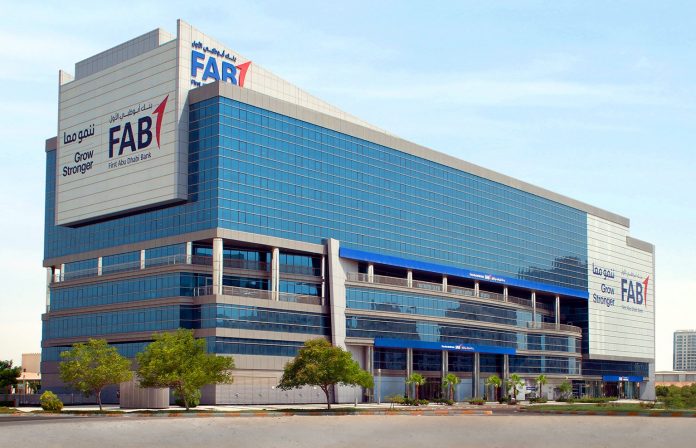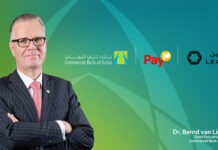First Abu Dhabi Bank (FAB has published its 2023 Global Investment Outlook report: ‘Heading into a New Cycle’. The report, written by the bank’s investment experts, examines the current global economic and investment environment, providing insights into key macro-economic trends.
FAB expects the GCC is likely to continue outperforming the global economy in 2023 in economic growth. The report forecasts the GCC states’ GDP growth will be around 4.2 per cent in the year ahead after ending 2022 close to 6.5 per cent. Egypt’s economy is forecast to grow by 4.7 percent in the 2022/2023 fiscal year, a reduction from FAB’s earlier estimate of 5.7 per cent.
The GCC forecast contrasts sharply with the International Monetary Fund (IMF) assessment of the global economy, recently predicting that 2023 will be the weakest year for global economic growth since 2009 at 2.7 per cent, 0.9 percent lower than it had been forecasting in the first half of 2022 – not including the low point of the COVID-19 pandemic. The difference is even more striking when compared with western economies, with the IMF forecasting just 1.0 per cent in real GDP growth for the United States this year, and only 0.5 per cent for the Euro area.
In financial markets, the investment trends of 2022 may continue into the first quarter of 2023, but the report predicts that markets should start recovering by the summer. FAB’s analysts believe that US interest rates, currently at 4.33 per cent and which have been the main driver of risk aversion among investors, will plateau later this year, with a likely recessionary outcome during the first half. Fast-rising interest rates have made traditional investments such as bonds and equities look less attractive to investors than cash deposit rates, but once the forecast US recession actually takes place, that should serve as a cue to invest in risk assets, especially with stock prices likely to bottom fairly soon once it arrives.
Alain Marckus, MD and Head of Asset Management, FAB Private Banking Group, said: “While as investors we can never be sure what is around the corner, 2022’s negative story is now probably much closer to being played-out and we are very close to the end of what has been a difficult bear market for both stocks and bonds. By mid-year at the latest, prescient investors will be running their slide-rules over the probably excellent earnings recovery that can be expected in 2024. Equity markets tend to look ahead by about 9-16 months. Smart investors also know that unpredictable ‘X’ factors can and will arrive to spoil things sometimes. So, it is too late to sell, because investors will probably not be able to get back in until after the ‘V’-shaped market recovery has begun. Those with cash should look to deploy it in the immediate months to follow.”
FAB’s outlook notes that the GCC region continues to be supported by strong oil revenues for its hydrocarbon exporters, which helps create a buffer for regional non-oil and gas sector activity and has helped return government balance sheets to surplus.
However, non-hydrocarbon economic diversification, so important to the economic evolution of the GCC, will be key to cushioning members’ economies from the downdraft of probable global recessionary headwinds this year. Encouraging sectors include growth for inbound tourism, with some GCC countries reporting higher tourist visitor numbers in 2022 than before the pandemic. Industrial production has also continued to expand across much of the region, including Saudi Arabia and Egypt.
While the report reflects a robust economy, the region has not been immune from global pressures. Inflation averaged 5-6 per cent across much of the GCC during 2022, reaching levels not seen in more than a decade but around half the figure for many western countries. FAB predicts GCC inflation will moderate to around 3 per cent in 2023. The picture for Egypt is more complex, affected by high food and energy prices and a further recent devaluation of the Egyptian pound, and inflation will continue to weigh on the nation’s economic outlook in 2023. GCC interest rates, as a function of their USD-pegged currencies, are likely to peak in May or June in line with further monetary tightening by the US Federal Reserve.
Market trends shaping future growth
Alongside key economic indicators, the FAB Global Investment Outlook considers a range of trends shaping future growth prospects, including a focus on specific industries.
Sectors included in the report include:
- Crude oil and carbon trading
- Developments in MENA and Egypt
- Emerging markets outlook
- Developed markets outlook
- Real estate
- ESG (environmental, social and governance)
Emerging opportunities include a predicted surge in sustainability-linked investment. It notes that the ‘Green’ bond market recently hit the milestone of USD 2 trillion in value, and ‘sustainable’ bonds – including social, sustainability, sustainability-linked, and transition bonds – reached a combined value of $3.5 trillion at the end of the third quarter of last year, according to a Climate Bonds Initiative report sponsored by FAB and launched at COP27.
The GIO report also points to a growing impact of carbon trading in the MENA financial landscape, building on the launch of landmark trading platforms in the GCC and MENA regions during 2022. These included in the UAE, where a partnership between Abu Dhabi Global Markets (ADGM) and AirCarbon Exchange (ACX) created the world’s first fully regulated carbon trading exchange. ADGM also became the first jurisdiction to regulate carbon credits and offsets as environmental instruments, a class of financial instruments, and to license exchanges and clearing houses that operate both spot and derivatives markets. Other regional initiatives include the launch of Regional Voluntary Carbon Market based in Saudi Arabia, and the Egyptian government’s launch of the first African voluntary carbon market during the COP27 climate summit in November.
FAB’s Global Investment Outlook 2023 can be viewed and downloaded here.











